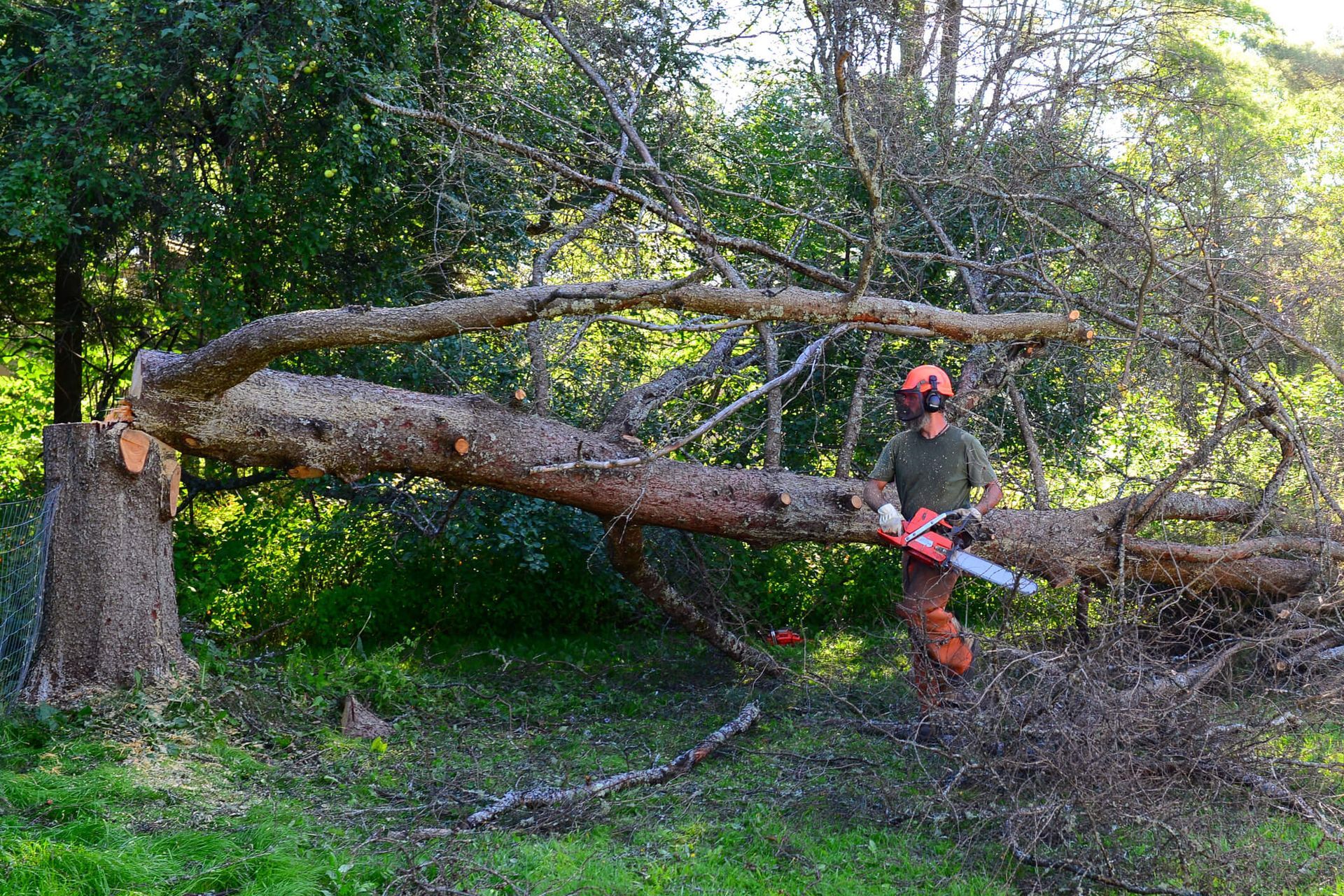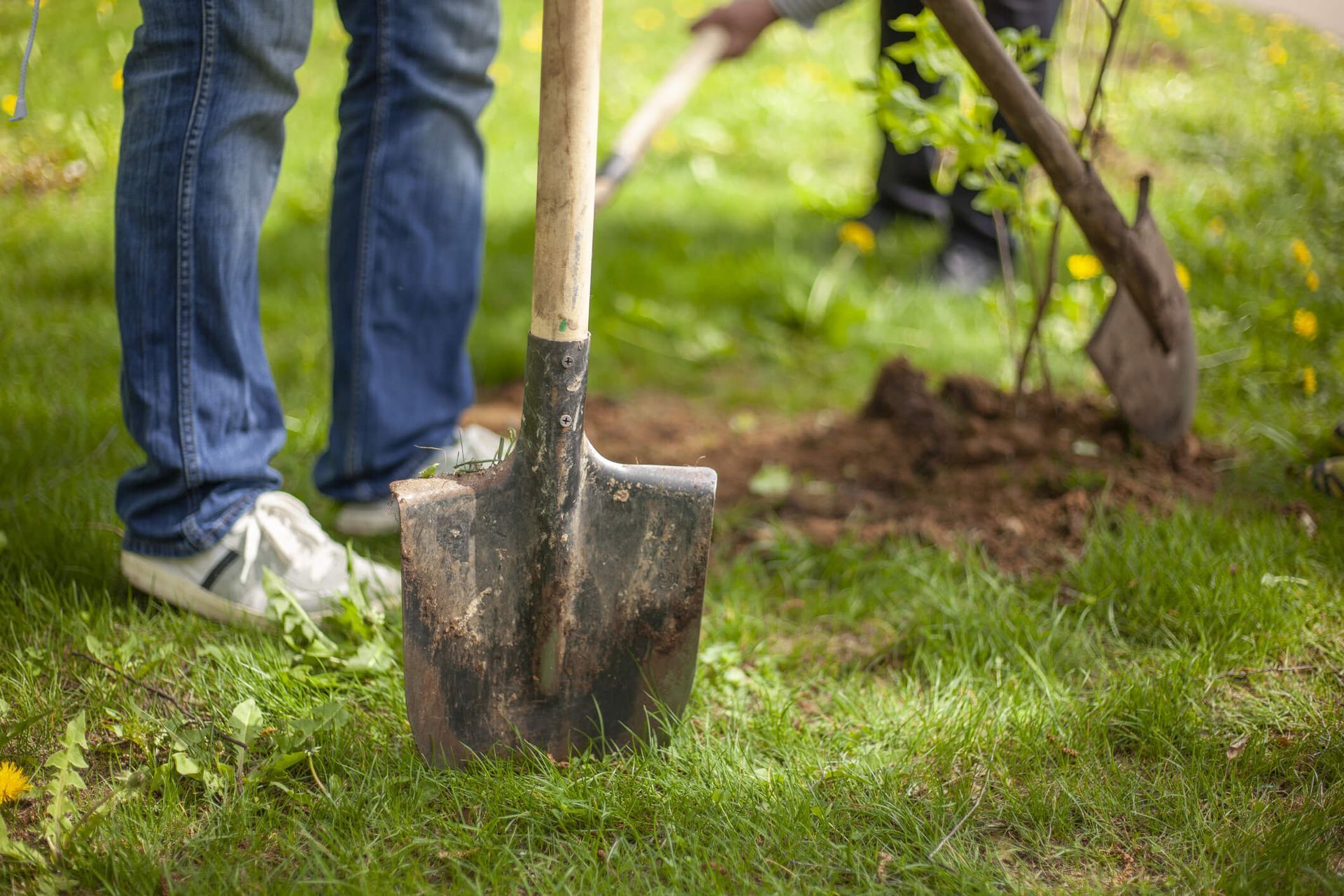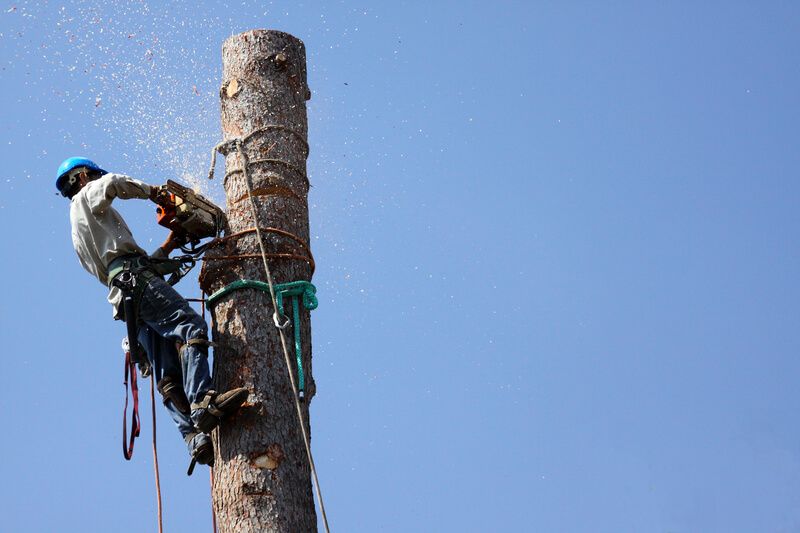Best Time of Year for Tree Removal
Tree removal is a significant decision that requires careful consideration of timing to ensure the health and safety of your landscape. Whether you're dealing with a diseased tree, one threatening property structure, or simply need to clear space, understanding the best time of year for tree removal can make a substantial difference. Here’s a detailed exploration to guide you through this crucial process.
Factors Influencing Timing
When considering the optimal timing for tree removal, several key factors come into play, each influencing the decision-making process significantly. Understanding these factors helps ensure that tree removal is conducted efficiently and with minimal impact on the surrounding environment. Here’s an expanded exploration of the factors influencing timing:
1. Tree Health and Condition
The health and condition of the tree itself play a crucial role in determining the best time for removal:
- Dormancy Period - Winter, when trees are dormant, is generally preferred for removal. During dormancy, trees are less actively growing, which reduces stress on the tree during removal and minimizes the risk of disease spread.
- Disease and Infestation - If a tree is diseased or infested with pests, prompt removal might be necessary to prevent further spread to nearby trees or plants. In such cases, the timing of removal might be dictated by the urgency to contain the issue.
- Structural Integrity - Assessing the structural stability of the tree is essential. If a tree poses an immediate risk of falling due to damage or weakened structure, removal might be necessary regardless of the season.
2. Weather Conditions
Weather conditions can significantly impact the feasibility and safety of tree removal operations:
- Winter - Cold temperatures and frozen ground can make it easier to maneuver heavy equipment. However, snow and ice can pose additional challenges and safety risks.
- Spring - Early spring can be suitable for tree removal before trees start budding. However, wet soil conditions from spring rains can make the removal process more challenging and potentially damage the surrounding landscape.
- Summer - Dry weather in summer can provide optimal conditions for tree removal, as visibility is clear and the ground is typically stable. However, extreme heat can pose risks to workers and equipment.
- Fall - Late fall, after leaves have fallen, offers clear visibility of the tree’s structure and reduces the impact on surrounding vegetation. However, timing must consider potential weather changes and local foliage cleanup requirements.
3. Local Regulations and Permits
Before scheduling tree removal, it’s crucial to understand local regulations and obtain any necessary permits:
- Seasonal Restrictions - Some regions have specific seasonal restrictions on tree removal to protect wildlife or nesting birds during breeding seasons.
- Permit Requirements - Certain tree species or sizes may require special permits for removal. Consulting with local authorities or arborists ensures compliance with regulations.
4. Accessibility and Logistics
Practical considerations such as access to the site and logistical planning also influence timing:
- Site Accessibility - Consider access to heavy equipment and debris removal trucks. Wet or muddy conditions can impede access, particularly in spring or after heavy rains.
- Neighbor Considerations - Informing neighbors about planned removal can help mitigate any inconvenience or concerns they may have regarding noise, debris, or temporary disruptions.
5. Cost and Demand
Timing can also impact the cost and availability of tree removal services:
- Off-Peak Seasons - Scheduling removal during less busy seasons (e.g., winter) may result in lower costs due to reduced demand for services.
- Emergency Situations - In emergency situations, such as storm damage or immediate safety hazards, prompt removal may be necessary, regardless of seasonal considerations.
Navigating the factors influencing the timing of tree removal requires careful assessment of tree health, weather conditions, local regulations, and logistical considerations. By prioritizing safety, environmental impact, and professional guidance from certified arborists or tree removal services, property owners can ensure that tree removal is conducted efficiently and responsibly, preserving the health and aesthetics of their landscape.

Key Considerations in Tree Removal
Here are some of the key considerations before tree removal:
1. Safety
Safety should always be the foremost consideration when planning tree removal. Trees, especially large or diseased ones, can pose significant risks during removal if not handled properly. To ensure safety:
- Qualified Professionals - Hire licensed and insured tree removal professionals who have the expertise to assess risks and execute removal safely.
- Adherence to Standards - Ensure the tree removal service complies with local safety standards and regulations. This includes using appropriate safety gear, equipment, and techniques.
- Risk Assessment - Prior to removal, conduct a thorough risk assessment to identify potential hazards such as nearby power lines, structures, or unstable branches.
2. Impact on Surroundings
Tree removal can impact the tree itself and its surroundings, including neighboring plants, structures, and the overall aesthetic of your property. Consider these factors:
- Environmental Impact - Evaluate how tree removal will affect nearby plants and wildlife. Minimize disruption by choosing methods that minimize collateral damage.
- Structural Considerations - Assess the proximity of the tree to buildings, fences, and other structures. Plan removal to avoid damage and ensure safety during the process.
- Aesthetic Concerns - Plan the removal to maintain or enhance the visual appeal of your landscape. Consider replanting or landscaping adjustments post-removal to mitigate any visual impact.
3. Cost Efficiency
Timing the tree removal during off-peak seasons can lead to cost savings due to reduced demand for services and potential discounts from service providers. Consider these aspects:
- Seasonal Demand - Rates for tree removal services may fluctuate based on seasonal demand. Off-peak seasons, such as late fall or winter, often have lower rates compared to spring and summer when demand is higher.
- Planning Ahead - Schedule removal well in advance to negotiate better rates and ensure availability of preferred service providers.
- Comparative Quotes - Obtain multiple quotes from reputable tree removal companies to compare costs and services offered. Look for transparent pricing that includes all aspects of removal, from cutting to stump grinding and debris removal.
By addressing these key considerations—safety, impact on surroundings, and cost efficiency—you can ensure that your tree removal project is not only successful but also minimally disruptive and cost-effective. Prioritizing these factors will help you make informed decisions and achieve the desired outcomes for your property and landscape.
Special Circumstances in Tree Removal
Special circumstances in tree removal encompass situations that deviate from standard procedures due to specific challenges, legal considerations, or urgent needs. Here’s a deeper exploration of these scenarios:
1. Emergency Tree Removal
In cases of emergency tree removal, such as storm damage or disease, swift tree removal is crucial to mitigate risks to property and safety. Here’s why prompt action is essential:
- Safety Concerns: Storm-damaged trees can pose significant hazards, potentially threatening structures, power lines, or pathways. Immediate removal minimizes the risk of falling limbs or the entire tree causing injury or property damage.
- Preventing Further Damage: Diseased trees can spread infections to neighboring plants, leading to widespread landscape issues. Quick removal halts the disease from spreading and potentially affecting the health of other nearby trees.
- Expertise Requirement: Emergency tree removal often demands specialized skills and equipment to safely dismantle the tree, especially in precarious conditions following a storm or due to weakened structural integrity.
- Environmental Impact: While swift removal is necessary for safety, it's crucial to consider its environmental impact. Proper disposal of debris and recycling of wood material can minimize the ecological footprint of emergency removal efforts.
2. Protected Species
Certain tree species may be protected by local, state, or federal regulations due to their ecological importance or rarity. Here’s what to consider when dealing with protected species:
- Consulting Authorities: Before commencing any removal activities, consult with local authorities, such as city planning departments or environmental agencies. They can provide crucial information on whether the species is protected and if removal requires special permits or approvals.
- Permit Requirements: Removal of protected species often necessitates obtaining specific permits, which may involve demonstrating the necessity of removal or providing plans for mitigation or replacement.
- Mitigation Measures: In cases where removal is permitted but impacts protected species, mitigation measures such as replanting or habitat restoration may be mandatory to offset ecological losses.
- Legal Consequences: Unauthorized removal of protected species can result in significant fines or legal penalties. It's essential to adhere strictly to regulatory requirements and seek professional guidance to ensure compliance.
Property owners can effectively manage tree removal by addressing emergency situations promptly and respecting regulations concerning protected species while safeguarding safety, environmental considerations, and legal compliance. Consulting with qualified arborists and local authorities ensures that removal actions are both responsible and legally sound, preserving the balance between human needs and environmental conservation.
Conclusion
In conclusion, determining the optimal time for tree removal requires careful consideration of environmental factors, tree health, and logistical feasibility. Whether selecting winter for dormancy, spring for clarity, or fall for convenience, engaging skilled arborists and reputable tree service companies ensures efficient, low-disruption procedures. Following these guidelines empowers homeowners to manage tree care responsibly, safeguarding landscape aesthetics and vitality.
It's essential to recognize that every tree and circumstance varies, underscoring the importance of consulting local experts for personalized advice. Their insights, based on regional conditions and the unique attributes of each tree, provide invaluable guidance on pruning, root care, disposal of wood and logs, and addressing hazardous limbs or tree-related problems. This approach enhances safety and considers insurance coverage, job size, and pricing estimates. By partnering with knowledgeable professionals, homeowners can navigate tree extraction or pruning jobs confidently, effectively addressing growth patterns, insect infestations, storm damage, and environmental benefits.
Ready to Safely Remove Your Trees?
When it's time to remove a tree, trust the certified arborists at SYS Enterprises for professional and reliable tree services in Southern Indiana or Metro Louisville. Whether you're dealing with diseased trees, intrusive roots, or storm-damaged branches, our team has the expertise to handle it all.
Contact SYS Enterprises today to schedule your consultation and discover why we're the trusted choice among tree companies. Ensure your landscape remains healthy and beautiful with our expert tree removal services that address insects, storms, and more.
Call us at (502) 724-6950 to schedule your tree removal and learn more about our comprehensive arborist-led tree services!
FAQs: Best Time of Year for Tree Removal
1. Why is timing important when planning tree removal?
Timing affects both the cost and impact on the landscape, as certain seasons make removal more accessible and efficient, especially considering ground conditions and tree dormancy.
2. How do weather conditions affect tree removal?
Weather can make a big difference; frozen ground in winter can support heavy equipment, while dry summer conditions may simplify the removal process.
3. What are common reasons for tree removal?
Trees are often removed if they're diseased, dead, causing structural issues, or obstructing new construction or landscaping plans.
4. Are permits required for tree removal?
Depending on local regulations, permits may be required, particularly for large trees, protected species, or trees near public spaces. Consulting local authorities ensures compliance.
5. How can tree removal impact nearby vegetation?
Tree removal can disturb surrounding plants incredibly close to the root system. Choosing an appropriate season or method can limit the impact.
6. What factors affect the cost of tree removal?
Costs are influenced by tree size, type, location, accessibility, and season. Off-peak seasons might offer lower rates due to reduced demand.
7. What safety precautions are necessary during tree removal?
It is crucial to conduct a risk assessment and hire certified professionals who use proper safety equipment and methods to manage potential hazards.
8. How do local regulations impact tree removal?
Certain areas may restrict tree removal to protect wildlife habitats or nesting seasons, so it's essential to be aware of any seasonal or species-specific restrictions.
9. What are special considerations for removing storm-damaged trees?
Storm-damaged trees can pose immediate risks, often requiring prompt and careful removal to avoid further property or environmental damage.
10. Why should a certified arborist be consulted before tree removal?
Arborists provide expert insights on the tree's health, optimal removal timing, and strategies to minimize environmental impact and ensure safe, compliant removal.
You might also like
Book a Service Today
We will get back to you as soon as possible
Please try again later
Get In Touch With Us
Contact us for a quote
Location
Charlestown, IN
yschilt4@gmail.com
Call
502-724-6950
All Rights Reserved | Sys Tree Service


